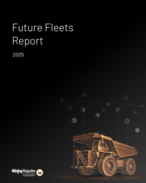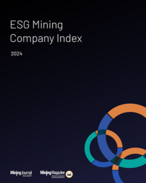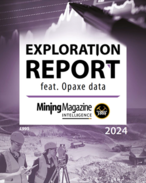This article is 19 years old. Images might not display.
The TCVP consortium, headed by coal chain management company TransCoal, has put forward a coal chain scheduling plan that would provide the state’s mines, rail lines and ports with the means to centralise planning activities to spread shipments more evenly and reduce expensive queuing and demurrage costs.
It is hoped an independent “whole of corridor” logistic planning and scheduling vehicle will streamline mine, rail and port efficiency.
The consortium includes accounting company PricewaterhouseCoopers, logistics software group Carmen Systems, and Queensland software engineer VRT Solutions. These companies have all been involved in the coal sector for many years and have installed the vast majority of information systems currently used to manage the coal chain.
According to TCVP, operational inefficiencies stem from a lack of coordination among stakeholders in the chain. Traditionally coal producers schedule their own vessel program some three to five months ahead of requirements while ports and rail operate within a ten-day horizon
The ability of the coal chain to cater for schedules is not modelled so there is no mechanism that allows consolidation of vessel schedules, nor is it possible to optimise any opportunities such as low-scheduled shipping months.
As each part of the system engages in isolated planning activities, this sometimes delivers sub-optimal overall efficiency, including behavioural conflict.
One expensive solution to increase capacity is to build more infrastructure, but, according to TCVP, the existing system is operating well below its optimal capacity.
With a longer-term view a supply chain coordinator could model, match, optimise, schedule and implement the components of the coal chain to the benefit of the entire industry. TCVP envisages a rolling five-month master model, updated daily with actual mine-rail-port operations to provide a forecast coal chain model.
“One benefit is that coal producers can have confidence that if rail opportunities are lost due to mine-site related delays then they need not be restricted to monthly contract restrictions,” TCVP said, which would eliminate “panic” scheduling.
TransCoal managing director Faith Dempsey does acknowledge there are barriers to getting such a system working, including getting the commitment of the related parties. Given the system will need to collect real-time data from existing information systems, interconnecting all the disparate information systems is another challenge. The TCVP system would not replace the functionality of those systems but would primarily act as a supervisory layer.
The model outlined by TCVP was currently being successfully applied on a small scale at the Jellinbah and Yarrabee coal mines, she said.
The plan has been submitted to the Department of Transport and Regional Services (DOTRS) for consideration at the next Coalition of Australian Governments meeting later this year.
TCVP is developing a proof-of-concept over the next three months. This involves developing a temporary schedule optimisation tool running offline with the goal of proving the benefit of the system to all stakeholders.























